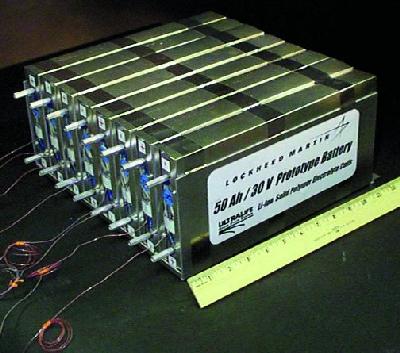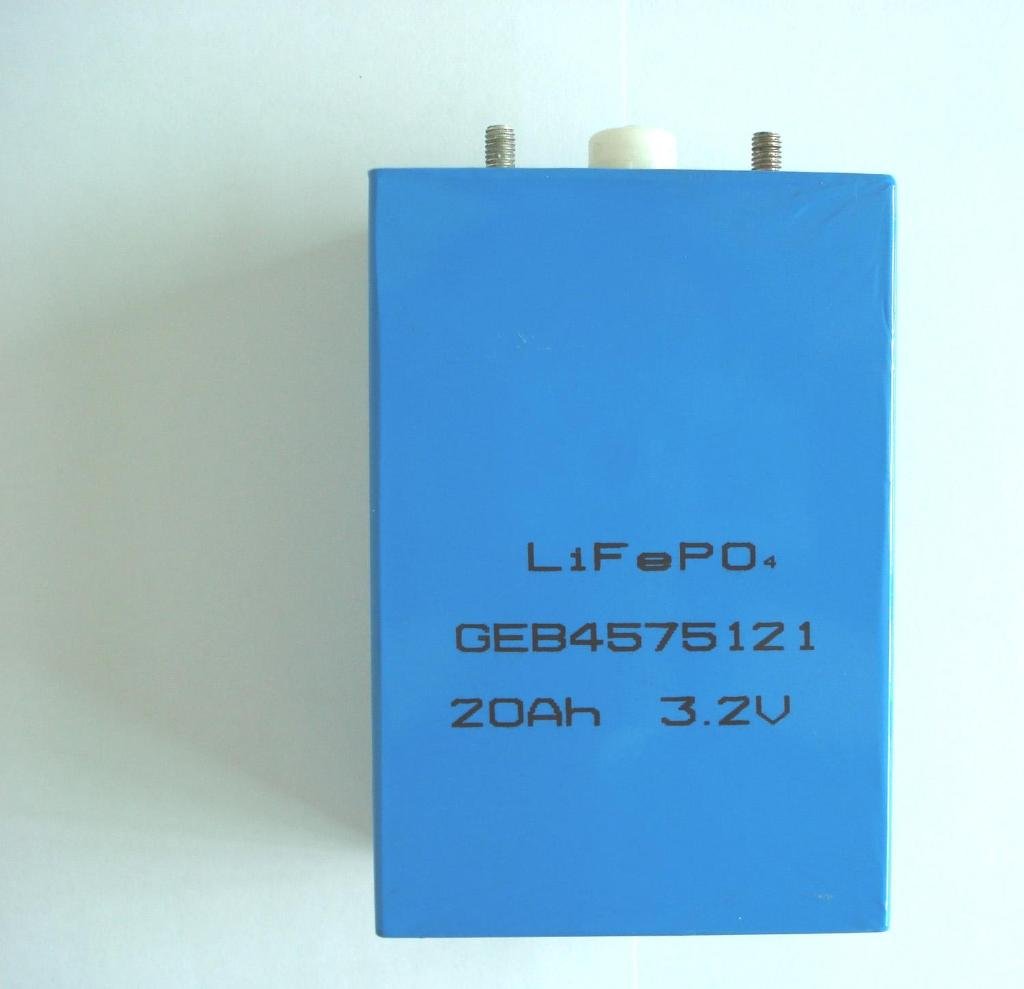If LM do have a military application for it, what is the danger of the technology becoming ITAR restricted, or worse?
Welcome to Tesla Motors Club
Discuss Tesla's Model S, Model 3, Model X, Model Y, Cybertruck, Roadster and More.
Register
Install the app
How to install the app on iOS
You can install our site as a web app on your iOS device by utilizing the Add to Home Screen feature in Safari. Please see this thread for more details on this.
Note: This feature may not be available in some browsers.
-
Want to remove ads? Register an account and login to see fewer ads, and become a Supporting Member to remove almost all ads.
You are using an out of date browser. It may not display this or other websites correctly.
You should upgrade or use an alternative browser.
You should upgrade or use an alternative browser.
I wasn't saying that larger format cells would help with those attributes, just that EV makers would like to "have their cake and eat it too" with easier to package larger cells, that also have improvements in many areas including the ones I mentioned.
Cost reduction is still probably the most important attribute we need improved though. If a pack that gives you 200+ miles costs $20K it will keep decent EVs out of the hands of the mainstream.
Cost reduction is still probably the most important attribute we need improved though. If a pack that gives you 200+ miles costs $20K it will keep decent EVs out of the hands of the mainstream.
JRP3
Hyperactive Member
Fewer larger cells would certainly be better. Fewer interconnects, simplified battery management, more temperature stability, simpler packaging/faster assembly, all which should lead to reduced costs.
I wasn't saying that larger format cells would help with those attributes, just that EV makers would like to "have their cake and eat it too" with easier to package larger cells, that also have improvements in many areas including the ones I mentioned.
Cost reduction is still probably the most important attribute we need improved though. If a pack that gives you 200+ miles costs $20K it will keep decent EVs out of the hands of the mainstream.
Ok, I agree with that but kind of doubt they will manage to improve on anything. Competition is good but Sanyo, Panasonic, ... aren't small companies that don't really know how to optimize operating costs, lower production costs etc. Small format cells have much much larger volume that larger format cells would have. Even if say Mercedes builds their own battries the unit count would reach into few ten thousands per year at most. That means higher cost as with smaller format cells (like 18650) where production is in tens of millions per year.
Martin's decision to go with laptop cells just makes more and more sense.
Reduced cost of packaging but with much higher cost of cells. Where's the bennefit?Fewer larger cells would certainly be better. Fewer interconnects, simplified battery management, more temperature stability, simpler packaging/faster assembly, all which should lead to reduced costs.
...more temperature stability...? Only if you build larger cells with cooling channels running through them. Otherwise you reduce the surface area to volume ratio. Which may be okay if your chosen cell chemistry is more resistant to the effects of higher average temperatures. But as we all know, cells with this property seem to have lower energy densities.
JRP3
Hyperactive Member
At some point their should be a benefit. We don't really know the costs involved, but potentially one larger cell at x price could be less than 20 smaller cells at y price. At the factory level it doesn't take all that much more to wind up a large cell than a small cell. There is a reason our 12 volt starting batteries aren't made up from 6 individually packaged cells.Reduced cost of packaging but with much higher cost of cells. Where's the bennefit?
Sure, but you cannot just jump there. 12V batteries are produced in houndreds of millions, it is a big market. It can very well be optimal to design and build them in monolithic way.At some point their should be a benefit.
With unit numbers in thousands I kind of doubt it. Remember the cost of A123 cells?
JRP3
Hyperactive Member
A larger mass changes temperature more slowly, simple as that. True that leaves less surface area for cooling but that doesn't mean it can't be enough. There may also be a more stable chemistry, one that may not necessarily have a lower energy density. Lower internal cell resistance should allow less heat buildup....more temperature stability...? Only if you build larger cells with cooling channels running through them. Otherwise you reduce the surface area to volume ratio. Which may be okay if your chosen cell chemistry is more resistant to the effects of higher average temperatures. But as we all know, cells with this property seem to have lower energy densities.
Last edited by a moderator:
JRP3
Hyperactive Member
To be fair we don't really know what is going on inside some of those larger "cells". Some may be smaller ones paralleled together. We do know that Thundersky and others have single prismatics up to 400ah and higher.
Washington Post
Batteries Drive Everything
And here is a meaty reaction on PBP at Climate Progress

And Mercedes Benz had an EV with battery swap.
GreenMotor: Mercedes: battery swapping is so last century - green car and electric vehicle blog - formerly Auto-IT.co.uk
Batteries Drive Everything
And here is a meaty reaction on PBP at Climate Progress
And Mercedes Benz had an EV with battery swap.
GreenMotor: Mercedes: battery swapping is so last century - green car and electric vehicle blog - formerly Auto-IT.co.uk
In 1972, Mercedes built an electrically powered people carrier called the LE 306. Its 31kW (42hp) motor could zip it along at 70km/h (44mph), with a range of 65km (40 miles). A contemporary press release explained that the battery could be “recharged during breaks or replaced using what is known as push-through horizontal-exchange technology”. In other words, a bloke with a pair of pallet-style trolley-jack things could shove the old battery out of the vehicle while winching the new one in, horizontally. “This procedure, which to a large extent can be automated, takes no more than the time needed to fill up a vehicle’s tank,” the release added.
Last edited:
JRP3
Hyperactive Member
It's good to see knowledgeable EV supporters taking apart the battery swap concept. It's the wrong path to go down and a distraction the EV industry doesn't need.
stopcrazypp
Well-Known Member
While the post at Climate Progress pointed out very good points on the negatives of the battery swap idea, many of responses they posted seem to have the attitude that PHEVs are the be-all end-alls.
Seeing how BEVs are evolving I don't think that has to be the case. I think once people get used to the lifestyle of plugging in, there only need to be a few rapid charge stations (from our last discussion it seems building them actually aren't as much of a challenge as previously imagined, and by rapid chargers I'm referring to the existing Posicharge systems, not necessarily the faster "10 minute" charger that's making the news nowadays) or maybe even external range extenders to fill in the gaps, especially as battery capacity continues to grow to the point that a 300+ mile Roadster might not be too far ahead in the future. I still think the PHEVs will only be transition vehicles (which may be important to the growth the EVs).
Last edited:
JRP3
Hyperactive Member
I agree that PHEV's are a transition vehicle. They are literally a hybrid vehicle.
PHEVs are the solution for the range problem right now, but in 3-5 years may no longer be necessary.
PHEVs are the solution for the range problem right now, but in 3-5 years may no longer be necessary.
The Car Battery Race: Showing Favorites? | BNET Auto Blog | BNET

Depew states flatly that Imara has the best li-ion technology on the market. “Our cells are delivering three to four times the cycle life of the best batteries that Sony and Sanyo have on the market,” he claims. Depew says that as many as 10 of the top 16 vehicle companies have come sniffing around Imara’s technology. “We’ve definitely had discussions,” he said.
Imara is ahead of many battery companies in that it already has manufacturing capacity in California, enough to finish a million cells a year, Depew said. It asked for $80 million in federal funding from the so far undistributed $25 billion Advanced Technology Vehicles Manufacturing Loan program to build the capacity to make 30 million cells a year.
Similar threads
- Replies
- 16
- Views
- 481
- Replies
- 85
- Views
- 3K
- Replies
- 1
- Views
- 738










